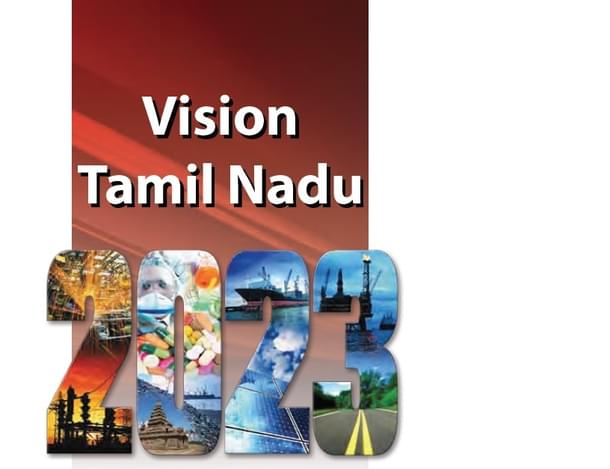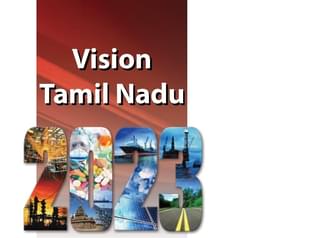Commentary
Tamil Nadu Vision 2023: A first look
Girish
Mar 26, 2012, 12:17 AM | Updated Apr 29, 2016, 02:31 PM IST
Save & read from anywhere!
Bookmark stories for easy access on any device or the Swarajya app.


Government of Tamil Nadu (TN) have unveiled a Vision Statement for the state. For the state this is probably a first when such aspirations have been articulated clearly and with defined objectives, quite a few of them quantitatively too. Many of us interested in governance issues have hailed the effort, rightly so. For a state whose political discourse swings from the absurd to the banal, this constitutes a refreshing break.
Comments are flowing on the document. Karunanidhi feels it is a dud – just a dream. Issues covered by the document merit a close area by area analysis. In this piece here, we take a quick, first look at some of the issues critical to realising the vision.
1.Precarious Fiscal Situation: State finances currently are in a mess. As shown in the chart in page 37 of the document, since 2005-06, fiscal deficit has been deteriorating and in 2010-11, it was 3.04% to SDP. This severely affects the ability of the state to raise resources for investment. Indeed as the document says (p 39), the state’s own contribution to Investment during the vision period will be within the 3 % limit (of the fiscal deficit to SDP ratio). This means that in the years there is limited room for any manoeuvre and hopefully there will be no major jump in needs for handouts – either proactively (welfare programs as they are euphemistically called these days) or reactively (as in the case of a natural disaster)
2.State Contribution to Resource Mobilisation: The Investment figure of Rs 15,00,000 crores is largely sought to be met through private sector contribution. As the chart in page 39 projects, share of private sector contribution is slated to jump from 15% in 2010 to 42 % in 2023. Correspondingly share of state sector is slated to drop from 60% in 2010 to 28% in 2023. The absolute numbers are quite challenging. State’s share in Investment in infrastructure is slated to rise from Rs 15,000 crores in 2010 to Rs 66,000 crores in 2023. For this to be realised –
- Tax revenues need to be buoyant – SDP growth should be high throughout
- State should have a tight control on expenditure. In the case of TN, all types of freebies should be held in tight leash
3.Centre’s Contribution to Resource Mobilisation: This could be a major challenge in realising the vision’s objectives. Some of the initiatives for instance on Railways are currently in the domain of Centre. Some others like in the area of Highways (like National Highways) are largely with the Centre. UPA policy in this area is particularly unfriendly. As noted in this two part article by Vasundara Raje in Financial Express ( Part one, Part two ), Centre’s transfer to the States is increasingly for projects conceived by the former. The quantum of untied funds is shrinking. Thus TN may get funds for a yojana named after Rajiv Gandhi, but will be constrained from using it for say developing the industrial infrastructure. Also as noted in that article, such ‘tied’ transfers are bound with conditions. TN can still get around this with some creativity but it is difficult to conceive a situation where from the Rs 28,000 crores planned in 2016 to Rs 71,000 crores in 2023 will come to TN with the required freedom – unless there is a different dispensation in the Centre!
4.Centre’s Policy Attitude: Current UPA government as its policy does not make any distinction between politicking and governance. We read many reports where the Centre uses its discretionary powers to upset and irritate States, without compunction. Some of these could be – holding back clearances in issues falling within its domain (e.g. environmental clearances), not spending requisite energy on inter-state issues (e.g. river linkages), and inadequate attention to areas falling exclusively within its domain (e.g. power transmission infrastructure). TN will need to get around these! Even if funds can be made available for the 20000 MW thermal power capacity if coal linkages are not available the project remains a non-starter (importing certainly is an option but creating so much capacity on imported coal cannot ensure another objective in the vision document viz providing energy at reasonable cost!)
5.Private Sector Contribution: This is perhaps the most challenging part of the vision document. From Rs 3,750 crores in 2010 it projects investment from Private sector sources to jump to Rs 99,890 crores by 2023. It will not be an exaggeration to say that the vision targets could simply fail if this is not realised. There are some serious issues in this bearing fruit. Some of them are:
- Rising interest rates – much higher since the Yeshwant Sinha days!
- Inter-state competition for Private Public Partnership model projects
- Non availability of sufficient number of players with the experience of executing large projects (that many existing infra companies are in reality crony capitalist does not help much).
- Inadequate preparation. Even today many of the implemented or under implementation projects are beset with problems. E.g. UMPPs, Delhi, and Mumbai Airports, many DISCOMs
6.Politics: Culturally although the state has a developed human resources base and long standing political consciousness, it can be argued that current political environment does not unequivocally support development. Looking back at the state’s history post 1967, it can be seen that there has been no real consensus on developmental issues. Administrations that attempted corrective steps have been voted out. Today’s political culture is that the DMDK with its political philosophy (if one can call it that!) is projected as an alternative! Development is almost by definition disruptive to status quo. MGR seemed to have understood this and practiced a unique brand of politics combining mystique, populism, showmanship, tokenism, and encouraging entitlement. He had no pretensions to effect fundamental change and possibly due that kept getting re-elected! A culture conducive for development needs to be created by the political leadership.
7.’Soft Issues’: Besides, some of the ‘soft issues’ that can trip the vision are:
- Corruption. Projects need to be implemented without having to pad up costs for corruption. Such padding can result in non viability. It is difficult to foresee private sector participation to the extent envisaged without projects being okayed purely on merit.
- Parochial Environment. A crucial prerequisite for attracting talent from all over the world (as targeted by the vision) is an open, facilitating culture. Today’s environment cannot be termed as anywhere near that.
- Culture of Entitlement: It is difficult to see openness to people, knowledge and ideas to coexist with a culture of entitlement that proposes to allocate resources communitywise on the bases of their shares in population.
- Officialdom: For this scale of growth, apart from political leadership, the government machinery needs to function competently, and fearlessly. Inability of the political leadership to foster this can trip all good intentions!
All said, a clear articulation of the goals is a welcome first step – more so in the existing environment of negativism! We can definitely expect the political leadership to be aware of the challenges of the types outlined above. Can we hope that they break out, engage the people, create the ambience, do the right things, and LEAD?




